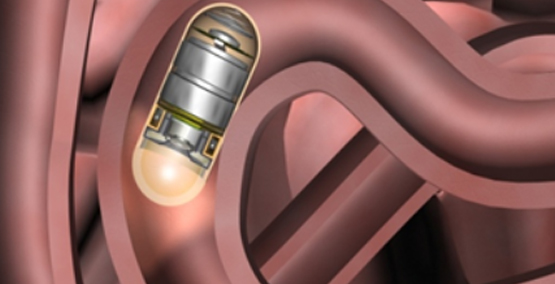
The Latest and greatest treatments for IBD: What to believe
What’s the best IBD medicine for me? Confusion on television and in your inbox....
See moresign up for our newsletter
SubscribePill cameras are the size of a large jelly bean. But even that small, they can find the ulcers and sores of Crohn's disease in the small intestine and soon, they'll be able to look at the large intestine at the same time. That's exciting, because doctors had to do a colonoscopy to look for IBD (inflammatory bowel disease) in the large intestine and then do another procedure (a small bowel pill camera or MRI) to view the small intestine. This new Crohn's Capsule is already released in Europe and it's being tested in the US. Because the capsule's software combines the 50,000+ pictures it takes into a video, it is known as a capsule endoscopy or video capsule endoscopy.
Most teens and adults can swallow these cameras like pills (a 4-year-old who takes large vitamins swallowed one easily). They have lights, batteries and 2 cameras. The capsule's movement through the intestine speeds up the number of images it takes. So when the intestine is quiet, 4 pictures are taken each second. That increases to 35 per second when the intestine is moving the capsule. The photos are transmitted to a monitor that downloads the images. At the end of the procedure, the monitor then uploads them onto a computer where a doctor can interpret the findings. Meanwhile, the pill is pooped out, usually the same day. Others can wait up to 2 weeks to poop the capsule out—and that's still normal. When it stays in the intestine longer, it can indicate that the patient has an abnormal narrowing (stricture). If a brief course of steroids doesn't allow the capsule to pass, it can indicate that the capsule needs to be retrieved and that the narrowing needs surgery. This is a rare event, happening less that 1% of the time in healthy patients, but up to 5% of the time in someone who has known Crohn's disease, especially if they are very thin. This is not an issue generally when Crohn's is first diagnosed.
During the procedure, which can last 8-12 hours, a specific diet is usually set out for the patient, so that the food eaten does not interfere with viewing the intestine. And they night before, a bowel cleansing with a mild laxative is usually recommended, so that the intestine can be seen clearly. Certain medicines are restricted like iron and what are known as NSAIDs because they can create sores that can look like Crohn's ulcers.
Patients are usually able to go to work though they are often told to move frequently in order to help the intestine remain active. No sedation is required and there's no radiation exposure.

Accuracy and Usefulness
The pill cameras are very useful in diagnosing early disease, before it shows up on x-rays and MRIs. That means it has great sensitivity. It is especially helpful in the small intestine where the colonoscope and upper scopes can't reach. With the new Crohn's Capsule able to see both the small and large intestine, it may help to avoid some colonoscopies. However, more studies need to be done to fully understand all of the new capsule's benefits and its accuracy.
Testing should be done before each use in patients who have known Crohn's disease, to make sure that there aren't any narrowings, so that the capsule can pass through. An MRI can be performed. There are also tests being performed using a dummy (placebo) capsule. It is the same size as the actual capsule, but dissolves if it gets stuck. If it passes without damage within a certain amount of time, then the actual pill camera should get through easily.
Also, in patients with known Crohn's, monitoring the disease with blood tests and stool tests can indicate active disease and that a pill camera will only confirm that activity. So it may not be needed to guide therapy in that case. The blood and stool tests may do so.
This article, as well as all others, was reviewed and edited by a member of our Medical Advisory Board.
Subscribe Be the first to know